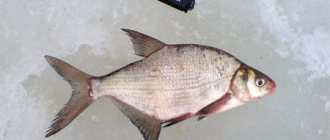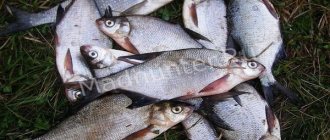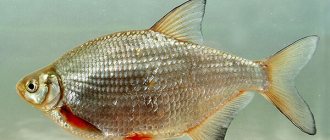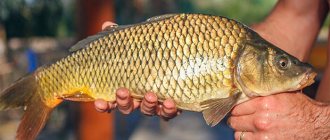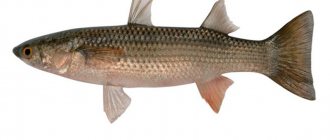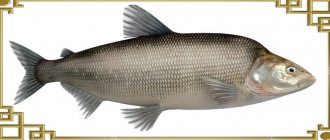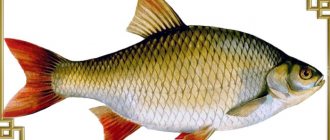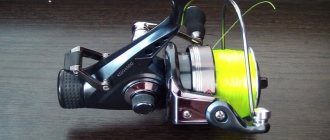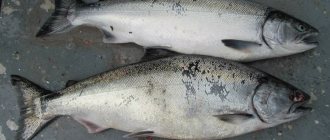Podleschik
The bream is the so-called immature young bream, which belongs to the only genus of Bream of the Carp family, so in some way it is a close “relative” of the silver bream.
Found in the following fresh water bodies:
- ponds;
- lakes;
- reservoirs;
- rivers;
- bays.
The breams live in the following areas of reservoirs:
- between the holes at the bottom;
- in sandy or clay drops and slopes.
They eat the following foods:
- larvae;
- worms;
- fry of another fish;
- small crustaceans.
Useful tips for fishermen about catching bream:
- Unlike adult bream, bream are always located quite close to the shore , so it is easier to catch;
- the bream loves to eat , so it won’t keep you waiting long if you use its favorite food as bait;
- this fish is quite shy , so it is better to remain quiet when catching it;
- if you catch one bream, then it is recommended to cast your fishing rod in that very place , since there may be a whole cluster of bream there;
- breams swim along the same routes all the time;
- float to the surface of the water at noon ;
- The greatest biting activity for scavengers occurs in the winter;
- The most effective bait for bream is considered to be a small moth mixed with crackers;
- Favorite porridges are wheat and pea.
Since bream are immature bream babies, they do not reproduce.
Lifestyle
White bream and silver bream often coexist in a pond, but their behavior and feeding patterns are slightly different. The white bream feeds in deeper parts of the reservoir, where depths can reach 8–10 m. Its main habitats are:
- channel edges;
- pits;
- deep-sea bays.
This fish leads a schooling lifestyle, with practically no individuals of another species found in the school. Spawning of the bream begins when the water warms up to a temperature of 12–14 degrees. The basis of its diet is bottom invertebrates. This underwater inhabitant can actively feed both during the day and at night.
On a note! Unlike the white bream, silver bream is rarely found at depths greater than 5 m. This fish prefers to stick to flat plateaus with depths of no more than 3–4 m.
White bream can often be found in shallow bays, where depths do not exceed two meters. If the white bream avoids areas heavily overgrown with aquatic vegetation and tries to stay in clean places, then in the warm season the silver bream can be found in the coastal zone, where there is an abundance of grass.
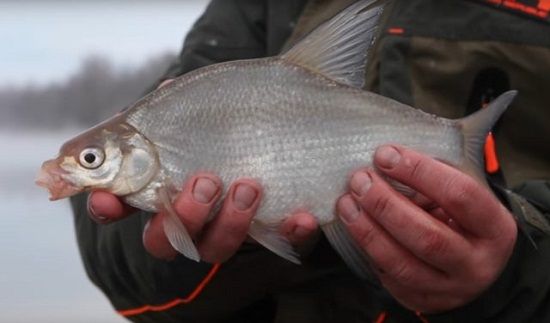
We suggest you read: Wolf tracks, how to distinguish them and what you need to know.
White bream also leads a schooling lifestyle, but in a school of these fish there are often representatives of other species, such as roach or bluegill. This representative of the carp family goes to spawn a little later than the bream, when the water temperature reaches 15–16 degrees. The silver bream can feed not only on invertebrates, but also on various plant foods.

Large bream, unlike silver bream, do not gather in schools of more than 500 tails. In addition, bream rarely eats plant foods and prefers a more high-calorie diet, which consists of shells and crustaceans. This fish occupies the deepest parts of the reservoir and can stand in strong currents. Bream exhibits the greatest feeding activity at night.
Gustera
Gustera is a freshwater fish that belongs to the only genus Gustera and belongs to the Karpov family. This fish received this name because their schools in reservoirs are very densely packed, creating a visible density.
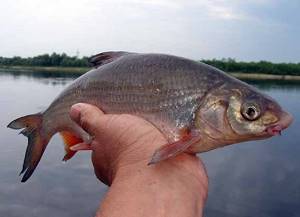
It lives in the temperate climate zone. The body of the silver bream has a very thin, flattened appearance. The body height often reaches a third of the entire length of the fish, which averages 30-34 cm.
The weight of the fish varies from 200 to 800 g. The silver bream has fairly large eyes with dark pupils. Compared to its body, its head is quite small with an oval, somewhat blunt nose. The color is gray with blue variations and with silver tints on the upper part of the body. All fins have a distinct red tint at the base, which fades to gray at the tips.
The silver bream prefers to live at great depths in reservoirs with moderate water flow and a sandy or muddy bottom. By nature, this is a rather “lazy” fish, as it is often found near the coast to make it easier for it to find food.
She lives in the following places:
- bays;
- rivers;
- ponds;
- lakes.
Also, the silver bream feels good in the reservoirs of Europe, fresh lakes and spills of the Black, Azov and Baltic seas.
Useful facts about silver bream fish:
- since the silver bream cannot see at night, it will be very difficult to catch it at this time of day;
- most often the silver bream can be found in heated areas of the reservoir, since it is a heat-loving fish;
- flocks of silver bream can be seen by the air bubbles above the pond that they release;
- The silver bream happily bites on fresh maggots, which need to be hooked several at a time.
Since in the summer the silver bream has plenty of food and its diet is quite large, during this period it will not be very willing to take any kind of bait.
But, starting from early autumn, namely from September, things change dramatically and the silver bream begins to actively peck, as its menu deteriorates significantly.
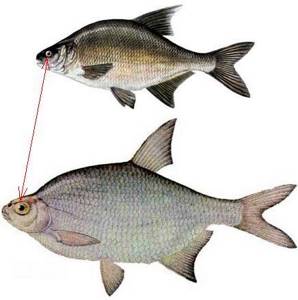
Types of the most effective baits for silver bream:
- maggots;
- worms;
- seaweed;
- larvae.
During spawning, the paired fins of the female silver bream become even more red, and the males develop small bumps on their scales.
Comparison of silver bream and white bream:
- The silver bream can have offspring, but the white bream cannot, since it is not sexually mature;
- The silver bream is almost always thinner and lighter in weight than the bream;
- the white bream has rather small eyes that look down, while the silver bream, on the contrary, has huge pupils that can be equal in diameter to its nose;
- the white bream has from 50 to 57 scales, the silver bream has only from 43 to 50 scales;
- The silver bream is not at all afraid of noise, and the white bream is very timid;
- the white bream can reach a size of 1.5 kg, unlike the silver bream;
- The bream is usually caught at noon, and the silver bream early in the morning or at sunset;
- due to the fact that the silver bream has very large scales, it seems that some of them simply do not fit on the fish’s belly.
What is the difference between bream and white-eye bream?
Fisherman › Fishing › Peaceful fish
Some fishermen do not know the difference between bream and bream, sometimes thinking that they are different fish. Others do not understand how to distinguish a silver bream from a white bream, as well as a bluegill or a white-eye.
All these representatives of white fish are similar, and with a trained eye the differences stand out immediately. In this article we will look at the nuances associated with identifying the species of these similar fish.
This can also be useful for a conversation with a fish inspector, so that, for example, a fine is not attributed to small bream, when in fact there is a weedy silver bream in the cage.
White bream and bream
One of the most common questions on the Internet is what is the difference between white bream and bream. Some believe that these are not the same fish. Sometimes illiterate scribblers in some articles indicate that these are different types of fish.
In fact, it is one and the same - Abramis brama, or common bream (eastern, Danube). Order Cypriniformes, family Cyprinidae, genus bream. Now the genus is monotypic, that is, represented by one species.
The similar blue and white-eye (sopa) belong to the genus Sintsy, and the silver bream is also monotypic to its genus. Previously, all these species belonged to the bream genus - now the opinion of scientists has changed.
In some regions, this fish is traditionally called keelak or chebak (in the south, not to be confused with the Siberian subspecies of roach). At a young age - a white bream, and sometimes a goat (confused with a silver bream).
Bream reaches 6 kg in weight and length up to 82 centimeters. The maximum age recorded by scientists is 23 years. All other named fish species are much smaller. Sexual maturity occurs at 3-4 years, and until this moment it is called the bream, since, in addition to size, it differs from adult individuals in body morphology and coloring.
The differences between the bream and the bream are due precisely to sexual development. Immature fish are thinner, silver-black in color, while adults are short-haired, humpbacked, with brownish-yellowish scales. Individuals under a kilogram, thin and silvery - consider them teenagers, large breams. This season they will already spawn and be considered full-fledged sexually mature individuals.
The difference between bream and white bream is purely age-related. These are the same type of fish.
White bream and white bream - differences
An adult brown bream cannot be confused with anyone else. However, the young one is often confused with similar representatives of white fish - silver bream (zoban), white-eye or blue bream. Most often in our reservoirs it is the silver bream that gets hooked. The silver bream and the white bream are similar in appearance.
At the same time, bream is a valuable commercial fish, for the catch of which fines are imposed in amounts less than the limits defined in different regions. Zoban and laskir are trash fish, which are not included in Table 19.1 of the fishing rules, that is, their catch is not limited. Unscrupulous inspectors can take advantage of this.
Therefore, it is better for the fisherman to have a good understanding of this issue, so as not to be charged with a small goat for a fine bream.
White bream and bream look similar when young, but they are completely different fish. The silver bream (Blicca bjoerkna) is also monotypic. It represents the genus in a single form and is much smaller in size than bream; only rare specimens reach a weight of 1.2 kg and a length of up to 35 cm. In the regions you can find names such as laskir, zoban or kalinka. Usually its numerous flocks consist of individuals weighing up to 200 grams.
The habitat conditions coincide with those of bream. However, it can be found much more often in shallow grassy areas, where bream is a rare guest. These fish are similar in appearance. A clear difference between the silver bream and the white bream is the number of pharyngeal teeth. The silver bream has 7 of them on each side, and the bream has 5. However, when fishing, we will not cut each fish and count these teeth. Let's take a closer look at the external differences.
External differences of silver bream
You can easily distinguish between a silver bream and a white bream by external signs:
- Scales. The bream has much smaller scales, which means there are more of them. If you count in a row from the first ray of the dorsal fin to the lateral line from top to bottom, then the underbreed will have 13-14 scales, while the goat usually has 12-11 or less. In addition, the body of the bream is abundantly covered with protective mucus. Zoban is much less “snotty”. In general, with the same mass, the bream looks more run-down and silvery. As it grows, the goiter's scales always remain silvery.
- Rays in the fins. The silver bream has 3 ordinary rays and 8 branched ones in the dorsal fin, and also 3 straight ones and up to 24 branched ones in the anal fin. Bream has more branched rays - 9-10 in the dorsal fin, and up to 30 in the anal fin. It is inconvenient to count and examine the rays while fishing, it is better to focus on other differences.
- The caudal fin of the silver bream is equal above and below, somewhat rounded in the notch. The notch of the bream's tail forms a right angle, and the upper branch is slightly shorter than the lower one.
- The color of the pectoral and ventral fins of the bream is often gray or dark, with a black edge. In goiter they are reddish. This sign is not accurate - depending on the conditions of the reservoirs, the color may be different.
- The easiest way to distinguish these types of fish is by their eyes. The silver bream has larger eyes in relation to the head. The distance from the tip of the muzzle to the eye is equal to or less than the diameter of that eye. The bream's eyes are smaller and seem to be directed downward. The distance from the mouth to the eye is greater than the diameter of the organ of vision.
Bluebird and white-eye
The bluefish (Ballerus ballerus) and the bluegill (ballerus sapa) are generally other fish and belong to the genus bluefish. The size of the bluegill does not exceed 50 cm and weight up to 1.2 kg, and the white-eye is even smaller.
The white-eye (sopa, sapa, glazach, kletets) is very similar to the silver bream. However, there is no red on the fins, it is more silvery.
The main difference is the huge eyes, covering almost the entire face, with a clearly defined white iris.
Tints are even easier to distinguish. This is a transitional fish species between bottom-dwelling fish and mounted sabrefish. It has a middle mouth rather than a lower tube, a more protruding body, and long dorsal and anal fins. All fins are sharp, similar to saberfish.
What is the difference between bream and white bream, silver bream and white-eye Link to main publication
Source: https://rybafan.ru/rybalka/mirnaya-ryba/otlichaetsya-leshh-podleshhik-gustera-beloglazka
Main differences
Although these two fish are similar to each other, they can still be distinguished by the following characteristics:
- The bream's eyes are always very large and have a dark pupil;
- The silver bream has fins with a reddish tint, and the bream has a dark gray, sometimes black tint;
- the silver bream has practically no mucus on its scales, while the white bream has quite a lot of it;
- in a young white bream, the open mouth resembles a tube; this is not observed in silver bream;
- The silver bream has a silvery tint of scales, and the white bream is bronze;
- the silver bream has much larger scales than the white bream;
- the appearance of the silver bream is disproportionate, since it has a very small head in comparison with its tall body, large eyes and small mouth;
- The silver bream also has a noticeable hump on its back; the white bream does not have this.
Useful tips for fishing
If you decide to go hunting for this type of fish, then take note of the following nuances:
- you need to have a lot of bait with you, since the silver bream is a very voracious fish, especially when it is in a school or during spawning;
- take bloodworms, pink, peas, millet, corn; in the warm season, you can add a little sweet syrup, crackers or molasses to the bait;
- jigs can be used in various shapes, types, sizes and colors;
- when selecting the thickness of the fishing line, you should still opt for denser specimens;
- be prepared for active fishing, because... the silver bream is a wild and courageous breed;
- The catch should be stored in cages made of nylon or wire mesh. For longer storage, it is recommended to use a tarp.
Having studied all the main differences, methods and features of fishing, you can easily catch a silver bream. Enjoy fishing, please yourself and your loved ones with a rich catch!
firstfisher.ru
Date of blog entry: 04/07/2015 Date of addition of blog entry: 04/07/2015
Many novice fishermen have a question about how to distinguish a silver bream from a white bream. Many people call both fish bream, which, of course, is wrong. These are different fish and let's learn how to easily and simply distinguish them from each other.
There are no problems with large fish. The silver bream rarely reaches a weight of 800-900 grams; this is a truly rare trophy. Whereas in terms of bream, this is approximately 2.5-3 kg
. So, if in front of you is a flat two-kilogram fish, it is most likely a bream))
Questions arise when both fish are palm-sized. While the white bream looks more or less the same in different bodies of water, the same cannot be said about the silver bream. There is such a “picture” version of the silver bream, which cannot be confused with the white bream. She has pink or yellowish pectoral fins, a large eye, very large scales, and even the body proportions are not bream, but closer to crucian carp (but thinner, of course).
In other bodies of water, the silver bream is so similar to the white bream that even an experienced fisherman cannot immediately distinguish them from each other. It’s easier when both fish are lying nearby, but if only one of them is caught, then what to do? There are varieties of silver bream with dark fins, like those of a bream, without a hint of pink. You also can’t immediately determine whether it’s big or not, if you don’t have anything to compare it with. Is it the same with scales, are they big or not?
Fortunately, there is a very simple method based on a quantitative indicator. We count the number of scales from the lateral line to the dorsal fin. The silver bream has larger scales and will have up to 13 scales, usually 8-12. The bream has smaller scales, this will be especially noticeable when approaching the dorsal fin. The bream will have 14 or more scales.
Here is such a simple way that allows you not to dissect the fish and not count the pharyngeal teeth, which, by the way, are in one row in the white bream, and in two in the white bream. This will surely separate one fish from another, but the method is quite cruel
Register or log in to comment.
salapin.ru
Less noticeable differences
In addition to all of the above differences, which immediately catch the eye of an experienced fisherman, there are also less noticeable differences between these fish, such as:
- difference in pharyngeal teeth;
- by the number of rays in the anal fin;
- by taste;
- according to susceptibility to diseases.
By pharyngeal teeth
In the silver bream, the pharyngeal teeth grow in two rows and number fourteen. The bream's teeth grow in only one row and their number is only ten.
By the number of rays in the anal fin
Since the bream is always slightly larger in size, its anal fin contains from 25 to 30 rays. The silver bream, which is usually smaller, has only 19-25 rays in the anal fin.
According to taste
The meat of the silver bream is slightly sweeter than that of the white bream, but due to the huge number of small bones, this fish is not highly valued by fish gourmets. In addition, it is quite bland in taste, since it contains virtually no fat.
However, fish such as silver bream can be quite tasty in the following prepared form:
- dried;
- dried;
- It makes a good rich soup.
Unlike silver bream, white bream is considered a tastier and fattier fish. In addition, its meat contains many trace elements and vitamins and is very beneficial for human health.
You can eat bream in the following forms:
- fried;
- baked;
- boiled;
- dried or dried (this kind of bream makes an excellent snack for beer).
By what signs can you distinguish bream from silver bream?
Silver bream and bream (bream) are two fish that novice fishermen always confuse. In fact, the two species are incredibly similar to each other, so it may not be immediately clear who is who. Despite the fact that these are different fish, they both belong to the carp family. In addition, both bream and silver bream live in the same reservoirs; they have approximately the same size, as well as the color of their scales.
The surprising thing is that the silver bream can adapt to the conditions in which it lives, and this additionally affects its resemblance to the white bream. If two individuals live in the same river, then even an experienced fisherman can find it difficult to understand how one fish differs from the other.
In order to distinguish silver bream from bream, it is necessary to carefully study these two species of waterfowl.
White bream and silver bream: what are they?
A young specimen of bream, which is familiar to all fishermen, is called a bream. The color of this species directly depends on the age of the fish, as well as its habitat.
Young breams often have gray-silver scales, which change to golden in color with age. Bream can usually be found in the thickets, it stays with its “brethren” in a small flock.
Fishermen note that these fish species are quite careful and intelligent.
In winter, the bream can be found in deep water, in various depressions and crevices.
The difference between the silver bream is, first of all, that it is more difficult to find in reservoirs, because it is less common in them. This is not a “loner” fish, so the presented subspecies always swim in large schools.
Gustera is always more active in feeding. At the same time, sometimes you cannot lure bream even with the most “appetizing delicacies”. With age, the scales of the silver bream do not change their color, remaining bright gray.
Important! Considering that the two species of fish described above have almost the same body shape and scales, they can be found in the same rivers, it will not be difficult to confuse them.
Although there is still a difference, it is not significant, but it is there.
Differences in fin shape and color
The main differences between silver bream and bream are their fins.
Guster has them like this:
- 3 ordinary rays in the dorsal fin, as well as 8 branched ones.
- 3 simple fins in the anal fin and about 20-24 branched ones.
As for the color of the fins, it is bright red. Actually, this is one of the clear signs that the fisherman is looking at the species of fish presented, and not some other. If we talk about unpaired fins, they are gray.
The bream's fins are:
- Gray in color and become darker over time.
- The anal fin (which starts from the dorsal fin) has about thirty rays.
What is the head shape of fish?
Gustera may differ due to the fact that her head has a blunt shape, at the same time, large cast-iron eyes and huge pupils seem to hide this defect. At night, the fish don’t bite because they practically can’t navigate in the dark.
The bream has a sharper head, the eyes are also large, but this subspecies is distinguished by its back, which rises steeply.
Tail and scales: finding the differences
The two feathers of the caudal fin of the silver bream are identical, and there is some rounding inside the fin. For bream, everything is a little different, because the cutout of the fin is a ninety-degree angle, and the upper feather is shorter than the lower one.
If we talk about the size of the scales, then the undergrowth differs from the silver bream in its larger size (there are about 12-18 scales in total). The first type of fish does not have more than thirteen scales.
Other Important Points
Bream and bream are considered one of the most common fish that many anglers “hunt”. The peculiarity is that this subspecies can be found in almost any river.
Given the special taste of fish, it is served in many expensive restaurants, baked over coals, in the oven, steamed, etc. Dried bream is in particular demand. The fish meat is tender and lean, which cannot be said about the silver bream.
This variety’s fillet is fattier and also richer, and the larger the individual, the more clearly this is felt.
It should be noted that, despite all of the above, perhaps not everyone will be able to immediately learn to distinguish one fish from another, but over time, with practice, everything will work out on its own.
In addition to those points that have been presented, it must be said that it is important to pay attention not only to the appearance of the fish, but also to the characteristics of its behavior. White breams come for bait intermittently, which cannot be said about the silver bream.
At the same time, you won’t find others at night.
Source: https://IaRybak.ru/leshh/otlichie-ot-gustery
